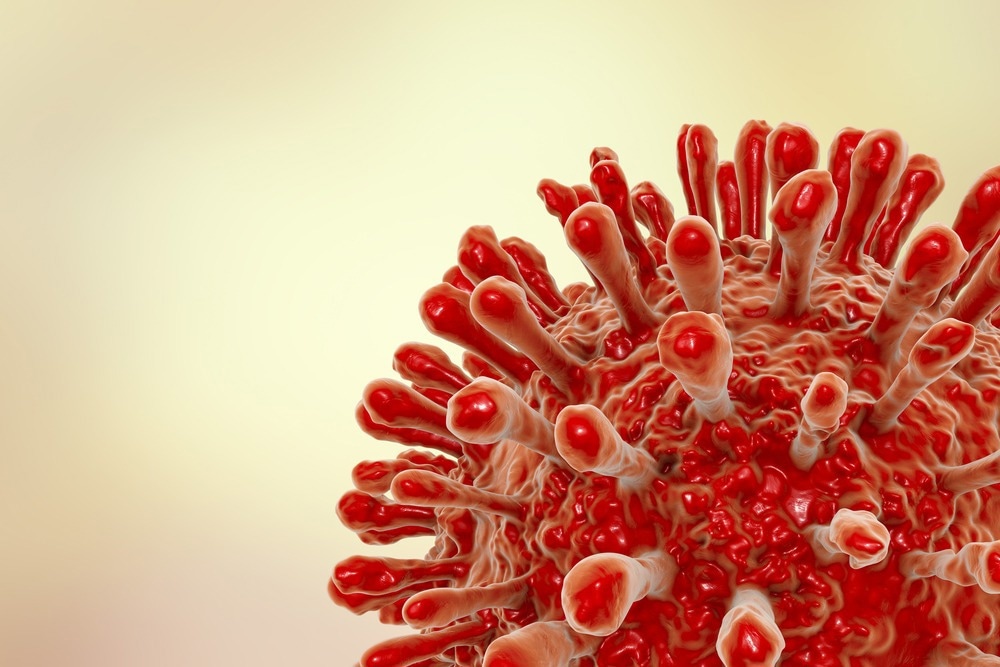In a recent study published in Molecular Biology and Evolution, researchers investigated whether denser intrahost human immunodeficiency virus (HIV) populations had a higher incidence of coinfection and recombination.
 Study: Elevated HIV Viral Load is Associated with Higher Recombination Rate In Vivo. Image Credit: Kateryna Kon/Shutterstock.com
Study: Elevated HIV Viral Load is Associated with Higher Recombination Rate In Vivo. Image Credit: Kateryna Kon/Shutterstock.com
The high rate of HIV recombination is critical for intra-host diversity, immunological evasion, multidrug resistance, and genomic integrity preservation. The average recombination rate is 105/bp/generation or higher; however, current research indicates that it may not represent the complete variance in various contexts. Recent context-aware studies on HIV-1 sequences have reported cold and hot regions for template flipping and recombination, influencing viral population diversification. The researchers propose that viral intrahost demography influences coinfection and recombination rates in human hosts.
About the study
In the present study, researchers evaluated the association between HIV population density and recombination rates.
The team performed recombination analysis via time series linkage decay (RATS-LD) to longitudinally sequence intra-host HIV bulk-sequencing data from individuals with varied viral loads for polymerase chain reaction (PCR) recombination to assess the relationship between HIV counts and recombination. They used short-read information to quantify intrahost recombination rates and used the degradation in genetic association over time between single-nucleotide polymorphism (SNP) pairs with increased D′ values. They used linkage decay measures (LDMs) to establish an empirical association between linkage decay and the time and distance between each LDM's associated pair of SNPs.
The team evaluated RATS-LD using simulated data with neutrality and parameters that better depict intrahost HIV. They replicated two HIV subpopulations linked by migration at rate m to investigate whether the difference in effective population sizes would change linkage patterns significantly enough to affect RATS-LD's accuracy.
RATS-LD was applied to in vivo HIV data, with the researchers determining the mean viral load for each time point pair inside an individual and comparing it to the mean viral load between the time points. They then divided the data into three groups with about equal numbers of LDMs based on the viral load tertiles. The researchers used SLiM to generate populations with known recombination rates to evaluate ATS-LD's capacity to quantify recombination rates. In addition, they run simulations using selection coefficients to improve the accuracy of replicating intrahost HIV development to test RATS-LD's performance in the presence of selection.
For estimating in vivo recombination rates, the researchers used longitudinal HIV deep-sequencing data from a recent study. To avoid superinfection, they used a leave-one-out analysis to remove data from one individual at a time and a simultaneous analysis. They also examined viral genomes from fifteen individuals who had recovered virus populations after receiving a single infusion of broadly neutralizing antibody therapy.
Results
For samples with the lowest viral loads (less than 26,800 copies/mL), the recombination rate was 1.5 events/bp/generation, consistent with previous estimates. HIV populations having viral loads within the lower third of the dataset showed recombination rates consistent with prior estimates (1.5/base pair/generation), whereas those with viral loads exceeding 82,000 copies/mL showed a nearly six-fold higher median recombination rate.
Furthermore, researchers observed increased viral loads with effective recombination among single individuals. Selection simulations yielded noisier linkage decay curves than neutral simulations; nonetheless, RATS-LD might represent the underlying recombination rates. RATS-LD estimation did not affect migration rates higher than 104; however, very-low migration rates marginally lowered estimates. Higher viral loads appear to be associated with quicker recombination between individuals, although viral loads can also vary dramatically within individuals over time.
Participant 1 demonstrated a significant difference in recombination rates across periods with viral loads above and below the median of 165,500 copies/mL despite having high genetic diversity and a wide range of viral load measurements. The recombination rate increases most dramatically in groups with the highest viral load. The findings indicated that HIV density within the host varies widely among human hosts to induce considerable variations in recombination rates in the in vivo settings. This unknown recombination rate variation may influence intrahost HIV data interpretation and evolutionary dynamics.
Conclusion
Overall, the study findings showed that recombination rates within viral populations can fluctuate dynamically, possibly affecting facultatively asexual populations with changing geographical co-localization. These rates are not constant, and intra-host circumstances affect them. Contact-network-mediated effects are likely in groups other than HIV.
Increased rates of recombination in HIV populations may disguise geographical compartmentalization, but low HIV counts among individuals on partially suppressive antiretroviral therapy may minimize drug-resistance-related mutations. Higher recombination rates may be more common in facultatively asexual species.